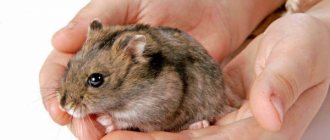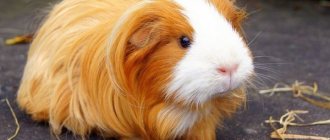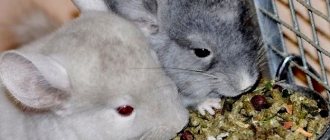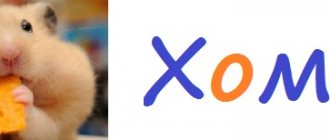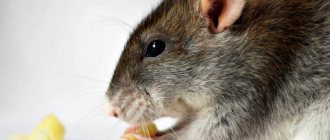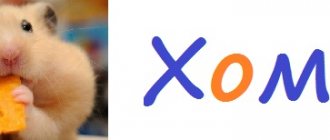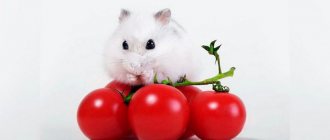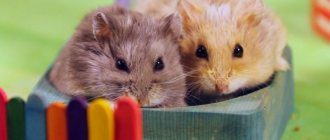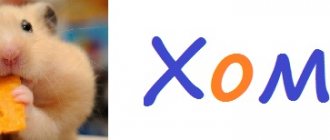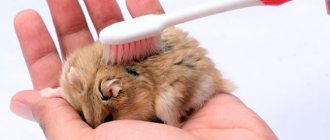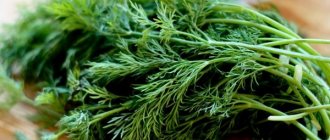Hamsters have become one of the popular caged animals. These little creatures come in many varieties, but some of the most famous are the Djungarian and Syrian hamsters. To keep a furry pet you only need a cage, a bowl and a drinking bowl. But careful care is also needed, feeding hamsters is an important part of caring for them so that they have good health and live a long life within their limits.
What does a rodent eat in nature?
Being an omnivore, the hamster eats almost everything that comes into contact with it. The exact diet is determined by the habitat. If a rodent lives in a steppe or semi-desert, it feeds on protein foods, including:
- Insects.
- Snails.
- Zhukov.
- Worms.
The importance of protein feed increases after hibernation or during gestation.
Field and garden individuals eat greens, fruits, cereals and vegetables. Feeding domestic pets should completely replicate the diet of their wild counterparts.
The natural instinct of hamsters is to be thrifty. Therefore, closer to the winter season, they fill up their storage. In this case, the pantry must be located in a hidden place and inaccessible to other animals. When keeping a rodent at home, you will need to periodically remove supplies, since food quickly spoils and emits an unpleasant odor.
Useful plants
Many owners are curious whether hamsters eat grass from our table. Dill, parsley, and lettuce leaves can be safely offered to your baby every day. This is the safest green for rodents to eat.
The situation is different with medicinal and field plants. Let's look at what grass hamsters eat in the wild.
Wheatgrass
This is a plant traditional for the diet of rodents. It is even included in the hay that is sold in pet stores. This herb, even in fresh form, will be useful for a hamster of any breed.
knotweed
A medicinal plant, very common in the middle zone. Used as an anti-inflammatory, diuretic. The hamster will willingly eat such grass, since in nature rodents often feed on it.
Clover
Tender clover leaves are an ideal herb for hamsters. Little by little, this plant can be offered to your pet at least every day.
Plantain
Plantain is a plant known for its medicinal properties. Hamsters enjoy eating this grass.
Burdock
Early burdock leaves will perfectly complement your pet's diet. They will have a general strengthening effect on the body, help prevent skin diseases, cystitis, and get rid of parasites.
Nettle
Nettle leaves are among the first to appear in spring and contain many useful substances. They must be added to the baby’s diet in case of vitamin deficiency or simply to support the body after the winter period. Fresh leaves must first be washed and then boiled in boiling water for a couple of minutes. Then cool, cut and only then treat your pet.
Snooze
Some owners, knowing about the beneficial properties of this herb, wonder whether hamsters can eat the grass called Snitch. This is a little-known, although very common plant throughout the country. The first shoots sprout in clearings that have just been cleared of snow.
Young leaves contain:
- a large amount of vitamins C and A;
- natural antibiotics;
- ascorbic acid;
- anticancer substances.
Carrot has properties that help prevent joint diseases, so it will be especially useful to treat your Syrian baby to it. It also strengthens the immune system and supports the body's strength during illnesses.
Rules for feeding at home
In the wild, the daily menu of hamsters is determined by their habitat. To ensure that your pet does not experience a shortage of essential food in captivity, you need to carefully think through the diet and maintain a balanced level of macro- and microelements in the animal’s body.
Mode
Veterinarians recommend feeding your hamster 2 times a day - morning and evening. It is better to give fresh food first so that the rodent does not start hiding it in the pantry. The bulk of the food is served in the evening. Hamsters are crepuscular rodents that prefer a nocturnal lifestyle.
To prevent your pet from overeating or experiencing food shortages, you need to adhere to the established feeding regimen.
Quantity
Depending on the age and size of the pet, different amounts of food are required. The hamster consumes quite a lot of food, and the daily norm is 80-100% of body weight. Appetite is determined by breed characteristics, microclimate and individual preferences of the individual.
The hamster considers food not only as part of the daily menu, but also as a strategic reserve. Therefore, uneaten food is put aside by the rodent in case of starvation. This leads to the appearance of an unpleasant odor and the development of pathogenic organisms in spoiled products. To prevent such troubles, you should remove the remains in a timely manner. Instead, you can put a few seeds in your pet's storage.
The need for cereals for hamsters
When providing a complete diet for rodents, the cereals included in it should be taken into account. Cereals for a hamster are a base that cannot be replaced. Cereals contain many microelements that have a positive effect on the pet’s life expectancy and its general condition. And the protein included in them becomes the basis for gaining muscle mass and determines the activity of the hamster.
Regardless of what kind of cereal you give your animal, it must be included in the diet. Otherwise, you risk depriving your hamster of a large amount of nutrients, which will have negative consequences on its health and immune system.
Pay attention to the quality of cereals that hamsters eat. It is better to buy them from a pet store than from the open market to prevent them from having harmful residue or poison in the form of pesticides, which is often found from private sellers.
The balance of the hamster's cereal intake needs to be controlled; it needs to be fed about twice a day. Follow some rules regarding cereals:
- Heavy cereals (boiled porridge, millet, lentils) should be given to rodents in the first half of the day so that they have time to completely digest them.
- There is no need to repeat typical grains in the diet (bulgur and wheat, oats and oat flakes) to avoid oversaturation with vitamins or lack thereof.
- Combine cereals, alternating them with the base one - wheat; any cereals and cereals can be combined with it.
Make your hamster's diet as varied as possible, however, when introducing new grains into the diet, do it gradually, monitoring the reaction of his body.
Cereals can and should be combined with each other, the beneficial substances contained in wheat complement oatmeal well, and pearl barley goes well with buckwheat. It is also not recommended to take rice and buckwheat at the same time, as the mixture will be heavy for the animal’s intestines.
For one day, a rodent's diet requires 30 grams of a dry mixture consisting of cereals. When cooking porridge, consider the weight of dry cereals.
Features of special food for hamsters
Ready-made food for rodents is available in pet stores, which have a balanced composition of vitamins and microelements.
Dry
Feeding domestic hamsters should include dry mixtures, which make up the bulk of their diet. Such food is produced using special technologies, taking into account the preferences and needs of the animal. Carefully selected ingredients of natural origin are added to the complexes.
Dry food mixture is the main element in a hamster's diet.
You can also find dry food for sale for other rodents or birds. However, it is not recommended to use them for hamsters, because... they have the wrong composition.
Wet
Despite the use of dry mixtures, natural wet food should not be removed from the hamsters' diet. The following vegetables are allowed to be used for feeding:
- Zucchini.
- Carrot.
- Lettuce leaves.
- Pumpkin, etc.
However, it is better to avoid using watermelons, cabbage, and potatoes, because... they can lead to digestive disorders in hamsters.
It is allowed to add some fruits to the menu. Apples, grapes and currants are especially beneficial for rodents.
Animals like raisins and dried apricots. You can give your pet apricots, pears or bananas as a treat. However, the fruits of the citrus family are contraindicated for hamsters. You should also not feed kiwis and avocados to rodents.
The hamster's diet includes dried apricots and raisins.
What can hamsters eat and what can’t hamsters eat?
It is important to have an idea of what you can feed hamsters, what fruits, vegetables or other types of foods can be given, and which are strictly prohibited or undesirable for your furry pet. Many owners give cabbage to their rodent, but only a few know that cabbage is harmful to the hamster’s digestion.
In addition to cereal mixtures and special foods, it is advisable to treat your pet with cereals, fruits, nuts, berries and dried fruits. Hamsters' food must contain a range of nutrients and vitamins. They provide essential vitamins and other beneficial substances.
What to feed hamsters:
- Carrots, broccoli, banana, cherries, currants (black/red), gooseberries, leeks, parsley, dill. These food sets contain vitamin A, which promotes the growth of new cells and has a positive effect on bones, fur and vision.
- Sunflower seeds, oatmeal, oats, peas, buckwheat, wheat, cashews, walnuts. Vitamin B affects the efficiency of digestion and has a good effect on the nervous system.
- Banana, apple, cherry, gooseberry, currant, blueberry, rose hip, radish, parsley, dill, dandelion leaves. These products contain vitamin C, which strengthens the immune system, promotes bone growth and cell repair.
- Sunflower seeds, cashews, wheat, barley, wheat and oatmeal, oats, walnuts, dill, dandelion leaves. These substances contain vitamin E. It is necessary for good blood circulation and muscle function.
List of recommended foods
Hamsters have a weak stomach, so you can feed them only those foods that they can chew and digest. It is forbidden to give the animal food from the table, spices, hot and sour foods.
Vegetables
You need to include fresh vegetables in your hamster's daily menu. It is necessary even when using ready-made feed. The following products are allowed:
- Zucchini.
- Cucumbers.
- Tomatoes.
- Beet.
- Broccoli.
- Eggplant.
- Bell pepper.
At the same time, you cannot feed the rodent potatoes, white cabbage and canned vegetables.
Fruits
There are several rules to consider when choosing fruit for hamsters:
- Animals are allowed only seasonal fruits grown nearby.
- The fruits must be ripe, but not rotten.
- You can use sour fruits.
- The frequency of taking fruits should not exceed 1-2 times a week.
- It is better to avoid using exotic fruits.
In addition, you should not feed hamsters fruits with seeds.
It is forbidden to give hamsters fruits containing seeds.
Berries
Pets are given fresh and frozen berries. Among them:
- Strawberry.
- Strawberries.
- Gooseberry.
- Cherry.
- Cherries.
- Blueberry.
- Currant.
If the berries contain large seeds, they must be removed before serving to the hamster. The seeds contain hydrocyanic acid, which can negatively affect the health of animals.
Greenery
For greens, pets are given nettles, clover leaves and plantain. If you have a garden area, you can pick lettuce leaves or dill. In winter, many hamster owners germinate cereal grains in the apartment and give sprouts to rodents.
Cereals
Various cereals are beneficial for hamsters. Among them:
- Oats.
- Buckwheat.
- Wheat.
Your hamster's diet should include whole grain cereals.
The main thing is that food for rodents is fresh and natural.
Nuts
Nuts contain a lot of fat. Therefore, they are given to the hamster in limited quantities and rarely (2-3 pieces per day). The pet can be periodically fed hazelnuts, peanuts, walnuts and pine nuts. In addition, he is allowed sunflower, melon and pumpkin seeds.
Dried fruits
Dried fruits are used as treats for hamsters. Allowed products include raisins, prunes and dried apricots.
Milk
Rodents are allowed dairy products. The main thing is that they have a low fat content.
Protein food
In their natural habitat, hamsters eat beetles, insects, worms and snails as protein food. At home, they can be replaced by boiled chicken, eggs, lean fish, mealworms and shrimp.
Pasta and bakery products
Hamsters love boiled pasta. However, they are given as a treat, no more than once a week. Occasionally you can feed your pet stale bread.
Rodents are allowed to give boiled pasta.
Controversial issues or what not to feed a hamster
There are products that cause controversy among animal owners. Is it possible to give milk to animals, how much cheese can you give, and what harm can crackers and bread do?
To answer these questions, we will have to return to the diet of animals in the wild:
- Adult animals do not feed on milk, and the composition of cow's milk is not suitable for young animals. Babies fed bread soaked in milk survive only due to their potential health, and not due to proper feeding.
- You should not feed your pet hamster cheese. It is quite fatty and contains a lot of salt: this will harm the rodent.
- Bread and baked goods are completely inedible for rodents, although they will chew them. There are too many harmful components in the form of fat and sugar in crackers and cookies. If you decide to feed something similar, choose unsweetened dryers. It won't be too useful, but in minimal quantities it won't cause any harm.
Apples in the diet of hamsters
Rodents eat apples with particular pleasure. However, such fruits can be given to them strictly according to the instructions. You cannot limit your diet to an apple diet, since the fruits are used as an additional source of vitamins.
Benefits for the body
The key advantage of apples is the high concentration of microelements in their composition. However, one must also take into account the presence of malic acid, which is unsafe for the animal’s gastrointestinal tract.
The fruits saturate the pet’s body with glucose in an acceptable amount.
Apples contain fiber, which improves the digestive system and prevents tumors in rodents.
Variety selection criteria
When choosing a variety of apples, you need to take into account that some hamsters prefer sour fruits, others prefer sweet ones.
At the same time, it is not recommended to give apples with a high concentration of sugars to young animals. This is associated with a risk of developing diabetes. Excessively sour fruits are unsafe for the gastrointestinal tract. Therefore, it is better to find a middle ground using sweet and sour fruits. It is recommended to choose apples grown in the region where the owner lives.
When selecting fruits, you need to make sure that they meet a number of criteria:
- Reached ripeness.
- Grown in a local garden.
- Rinse thoroughly under running water.
It is recommended to give hamsters apples of sweet and sour varieties.
Processing Tips
Before serving to your pet, the fruit must be immersed in water for several hours. If a sweet and sour variety contains a lot of sugar, it can become dangerous for the rodent, especially for its gastrointestinal tract.
The seeds must be removed to avoid poisoning. It is better to remove the peel if the apples were purchased at the store. It is enough to wash the fruits grown in your garden.
Introducing fruits into the diet
You need to introduce apples to your hamsters' menu gradually, sticking to small portions. At the same time, it is important to carefully monitor the general well-being of rodents. If their body reacts positively to the new product, the daily intake can be increased. However, the fruits should not be allowed to rot in the cage area. It is better to give apples to the animal up to 3 times a week.
Types of feed
JR Farm
The first most popular food for small pets. It is unique in composition, as it contains a lot of the most beneficial vitamins and minerals, which greatly helps the digestive process. This manufacturer has collected the most delicious ingredients, which include red millet and wheat ears. The product contains a huge amount of protein, which makes the product the most popular.
Despite the large number of advantages, the only disadvantage is the inconvenient packaging. The general public opinion about this product is positive, which allows it to occupy the top line of the rating.
Benelux Special
The next food I would like to talk about. This is a product of one of the most popular premium brands. Its composition is unique because it includes the best components that should be given to a small pet. There are also enough useful minerals and substances that contribute to the full life of your pet. In addition to the advantages, the disadvantages of the product can be noted - it is relatively high cost and low protein content. But this product also received popular love.
Fiory Criceti
The first among foods to support immunity. The composition of this product is varied - it includes different types of cereals, peanuts, peas, honey. A large amount of vitamins, amino acids, and minerals also predominate. All this is perfectly absorbed by the body of a small rodent and supports the immune system.
The disadvantages include the limited amount of protein and the presence of honey, which is not indicated for all animals, as it can cause an allergic reaction.
Padovan Grandmix Criceti
The list of permitted foods includes fruits, vegetables and herbs. For example, you can add dried fruits to your Djungarian hamster's diet. In the first place, the basis of the diet still remains food made from durum wheat and grain. In order for the hamster's teeth to be ground down, it is produced in granules.
Various goodies
Grocery stores offer a variety of treats for hamsters. But before purchasing such food, you should make sure that there is no salt, sugar, flavor enhancers or flavorings in their composition. Such additives are a slow poison for rodents. Therefore, it is better to give preference to the following foods:
- Nuts.
- Banana chips.
- Dried fruits and dried vegetables.
- Sunflower seeds.
Sunflower seeds are a treat for your pet hamster.
Can hamsters have bell peppers?
Discussion: 2 comments
- Marie:
03/09/2018 at 16:36Can hamsters be given flaxseed porridge? or flax seeds?
Answer
abervv:
03/10/2018 at 23:52
A hamster can be given flax seeds only as an additive to the main food.
Answer
Tree branches and grass
Solid food is a must for a furry pet. A rodent's teeth continue to grow throughout its life, so when it eats tree shoots, it wears down its fangs.
Before submitting, the branches need to be properly prepared. Raw materials are collected away from roads, for example in the forest or in the country. Then it is thoroughly washed and scalded with boiling water to eliminate pathogens.
It is allowed to feed the hamster with branches of pear, maple, birch and apple trees.
All about porridge
When adding porridge to your diet, consider their beneficial properties. However, what can be given to hamsters is recommended to be administered carefully to prevent your pet from having an allergic reaction. This is rare, but there is a risk of deterioration in his health.
Also, do not forget that wet mash of cereals quickly turns sour; it should be cooked before use.
Cereals can only be eaten by animals in their natural form. When preparing for use, you cannot add salt, sugar and other spices to them, or season them with oil. Milk has a negative effect on the health of hamsters, so porridge should be cooked in water.
Boiled porridge is given to weakened and sick hamsters, because in nature they do not eat it. Regularly clean the cage from the remains of porridge, as animals often take leftover food into burrows and hide them, and if they are stored for a long time, there is a risk of poisoning the animal.
Vitamins for pets
Store-bought mixtures for hamsters contain all the necessary vitamins and microelements. However, in some cases it is necessary to introduce them artificially in order to protect pets from the development of infectious or viral diseases.
Vitamins for hamsters are an important component in their diet.
Vitamin complexes with different compositions are available for sale. However, you cannot choose them yourself without first consulting a veterinarian. The specialist will advise the appropriate complementary foods and dosage based on the age and condition of the pet’s body.
Differences between the Djungarian hamster and the Syrian
This section was added so that the reader does not have questions about what grain each species eats.
All of the above about cereals applies to both Djungarian and Syrian hamsters, because they both differ only in a few ways:
- coat color;
- size and portion (Syrian hamsters eat a lot);
- speed of attachment (the Syrian hamster will quickly get used to a person);
- space; big Syrian hamster - a big house!
We are what we eat. It's the same with hamsters. It is necessary to add more different cereals and fruits to the diet of a small rodent and monitor the usefulness of the food offered.
The food must be nutritious and balanced. In addition, it is necessary to calculate the dose so that the hamster does not leave large “deposits” in the house.
This whole thing is not easy, since the food on the counter does not always bring maximum benefit to the pet’s body, but the mission is feasible.
Forbidden food
When feeding hamsters at home, you should avoid the following foods:
- Syrov.
- Cabbages.
- Of bread.
- Fruits of exotic origin and citrus fruits.
- Sausage products.
- Sweet food.
It is better to avoid feeding your rodent dandelions. Their stems and foliage contain milky sap, which provokes irritation of the animal’s pouches.
Hot, spicy and fatty foods should not be allowed in the diet.
Other cereals
Less common grains can be used to add variety to a hamster's diet, regardless of their origin. You can select varieties of grains based on the health status of your pet. This way you can balance his diet, preventing deficiency or oversaturation of the body with microelements.
In addition to the standard options, hamsters can also eat other types of cereals:
- Pearl barley. It has a positive effect on the health of the animal and can be used as an analogue of buckwheat. It is recommended to eat it steamed; to do this, you need to steep the porridge in warm water for an hour. Be careful - individuals can hide part of the food in a hole, keep track of this to prevent your pet from being poisoned by stale porridge.
- Lentils. You can feed your hamster lentils; animals love this cereal, especially when boiled. It can also be used dry, which will add vitamins to the animal’s diet. Cereals are rich in fatty acids, which promote the healing of the outer skin and the restoration of the body after illness.
- Semolina. You can eat semolina porridge for your pets, but it will not bring any benefit and only contributes to weight gain, it is better to choose another alternative. But if you need to introduce it into the diet, as prescribed by a veterinarian, you need to boil it in water; semolina is not given in dry form.
- Barley. This option cannot always be used; it is suitable for healthy pets; you must first remove the outer shell. Most often it is given raw, but you can also take it in the form of sprouts. It is not recommended to germinate them for a long time; two days is enough for this.
When feeding, you should not use muesli, as they are not intended for consumption by the animal, which is why they can cause harm to the fragile organism.
Some nuances of feeding
You need to care for hamsters strictly according to the recommendations of specialists. When planning a diet, it is necessary to take into account age, current health status and physiological processes such as hibernation or gestation.
Newborn hamsters
In most cases, the female feeds the children on her own if she is provided with the right conditions. Therefore, there is no need to disrupt the natural cycle. If the female runs away, leaving her offspring orphaned, she has to feed them special food. For the first few days after birth, newborn hamsters are given kitten formula. Pets need to be fed every 2 hours using a pipette.
You can feed the offspring of domestic hamsters yourself using kitten formula.
Individuals aged 2 weeks are given infant formula “Gerber” and “Agusha”, cereals without milk and sugar, and also greens grown at home.
3-week-old animals are offered crushed adult food.
Elderly
As a rodent ages, its teeth begin to deteriorate, so it stops eating as before. Against the background of age-related changes, pureed vegetables and chopped feed should be included in the diet. You can give your rodent baby cereals that do not contain milk. And to avoid problems with the gastrointestinal tract, your pet should be periodically fed grain porridge.
Pregnant or nursing
During pregnancy or nursing the offspring, the female needs to be given a lot of protein food. This includes boiled fish, chicken, eggs, shrimp and mealworms.
Sick and weak
If your pet is sick, he will have to be fed using a syringe without a needle. In most cases, warm chamomile is brewed for such rodents. The use of honey or milk is prohibited. If the hamster refuses to eat food, you will have to forcefully give it, otherwise the pet will not recover.
Features of feeding a pregnant or lactating female
When feeding and bearing offspring, the female will eat more than at other times. This is due to an increase in the daily intake of nutrients. It is important to provide high-quality food to pregnant and lactating females. It should contain vitamins and minerals. It must be supplemented with herbs, cereals, protein supplements, fruits and vegetables from the list of permitted ones. The diet is planned so that products from different categories are present.
It is better to keep the mineral stone in the Syrian hamster's cage at all times.
Veterinarians recommend giving pregnant females extra treats. Pieces of chalk or mineral stones will do. When bearing offspring, it is important to provide the hamster with maximum comfort. The animal may become nervous if food portions are small and there is no supply, so it is better to offer the pet a little extra food. The female will determine how much she needs to eat.
What to feed the babies
Up to 1 month, the cubs feed only on mother's milk. If necessary, it is allowed to supplement or completely feed them with soy-based infant formula for newborns. Substitutes for kittens are also suitable.
At 1 month, the hamster’s digestive system has not yet fully formed, but is ready for a gradual transition to a standard diet. The cubs are given grain food, giving them the opportunity to choose what they like best. Milk porridge and steamed buckwheat or oat flakes with the addition of baby purees are suitable for feeding small hamsters.
Other products are introduced gradually and 1 at a time. Start with fresh herbs, young shoots and sprouted grains. Nuts, fruits and other treats that are difficult for the gastrointestinal tract are introduced later, after growing up.
What do dwarf hamsters eat?
Feeding Djungarians is practically no different from feeding Syrian hamsters, with one exception. Children are susceptible to diabetes. For this reason, hamsters should not be given sweet fruits as their main diet. It is better to limit yourself to rare cases and give such fruits in small quantities.
